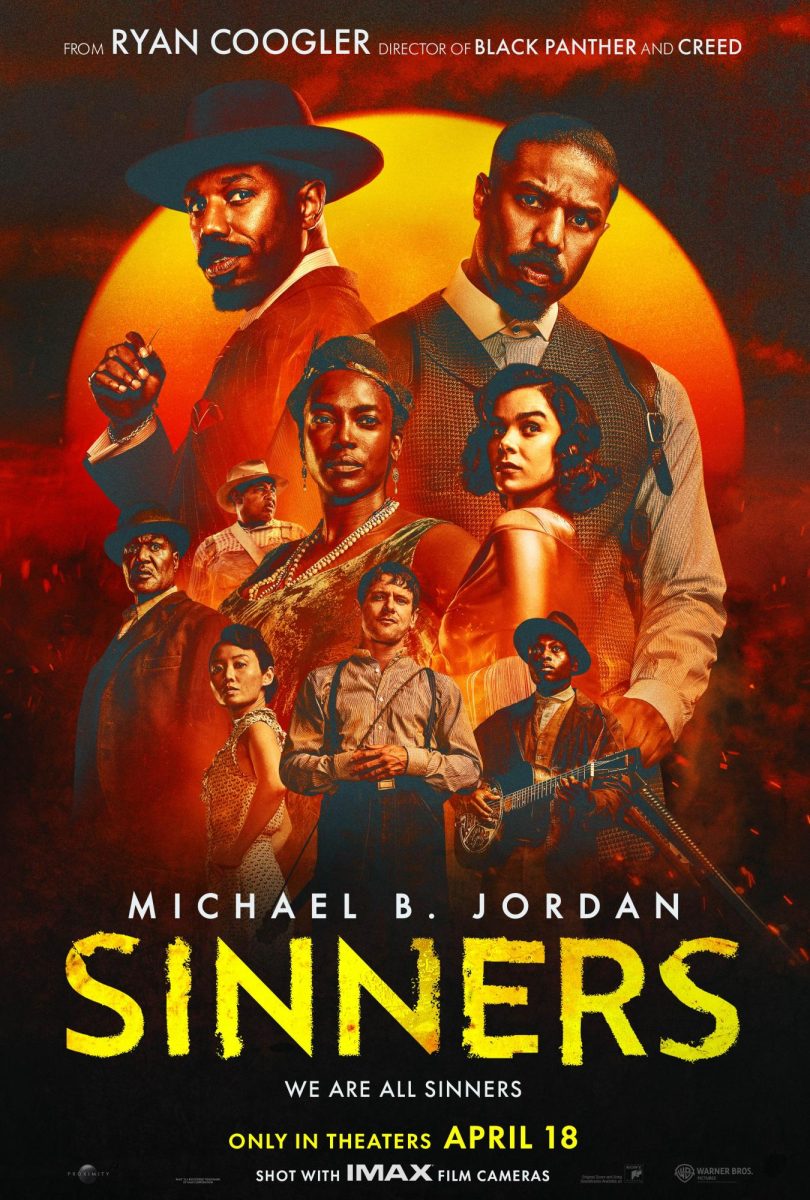
The film poster of Sinners. Courtesy of Warner Bros. Pictures.
Sinners is director Ryan Coogler at his most unhinged—and perhaps his most inspired.
Imagine The Social Network’s twin-tech trickery meets Inglourious Basterds with a pinch of Get Out, and you’re somewhere in the ballpark of Sinners. Michael B. Jordan is Armie Hammered (à la The Social Network) into two roles—Smoke and Stack, twin brothers and ex-mobsters—who swap their tommy guns for hospitality and head home to Mississippi in 1930 to restart their old life.
There, the brothers open a juke joint for the Black community with Irish beer, Italian wine, and gospel-turned-blues on stage. Their venture is part defiant entrepreneurship, part cultural remix, and fully romantic in Coogler’s unique fashion.
Enter Sammie Moore (Miles Caton, a breakout star), a preacher’s kid with calloused fingers and a voice that can almost raise the dead. He’s roped into the brothers’ juke joint plan as their house guitarist. For a moment, the film hums like an alternative historical ode to Black artistic ambition. As the film settles into something like Southern magical realism, there’s rhythm, hope, and even space for joy. Then come the vampires.
Yes, actual vampires. Bloodsuckers turn Mary (Hailee Steinfeld), Stack’s ex-girlfriend, into a vampire, descending on the juke joint and flipping the entire film on its head. In a genre swerve so abrupt it practically reboots the movie, the narrative detours into full-blown bloodbath horror. Limbs fly. Gore splatters. The tone fractures. Suddenly, we’re watching Michael B. Jordan fight… vampire Michael B. Jordan.
It’s either ridiculous or genius, and somehow, Coogler makes a strong case for both. It’s outrageous, and it works. Coogler doesn’t treat the genre shift as a gimmick—he leans into it. The film mutates into horror without losing its core, using pulp violence to expose something deeper: the predatory systems lurking beneath America’s surface.
And just when you think it can’t get any wilder, the Ku Klux Klan shows up. It turns out the juke joint was always the Klan’s target in a carefully orchestrated trap designed to wipe out the community in one night. When Michael B. Jordan guns down a dozen Klan members, the audience breaks into thunderous applause. Horror meets history meets allegory and not in a subtle way.
But subtlety isn’t the point. Sinners, maximalist by design, bites off more than it can chew and somehow still swallows it whole. Coogler threads together a wild tapestry of themes: musical heritage, Black spiritual resistance, interracial exchange, colorism, and the enduring terror of white supremacy.
Sinners is messy. It’s audacious. But it’s also the kind of mess only a confident filmmaker could attempt. Underneath the genre acrobatics, there’s a master at work. In less capable hands, Sinners could have been a disaster. Instead, it’s a bloody, beautiful, genre-mashing, hysterical, and historically informed miracle.
Sinners dares to be too much, and that’s exactly why, against all odds, it works so well.